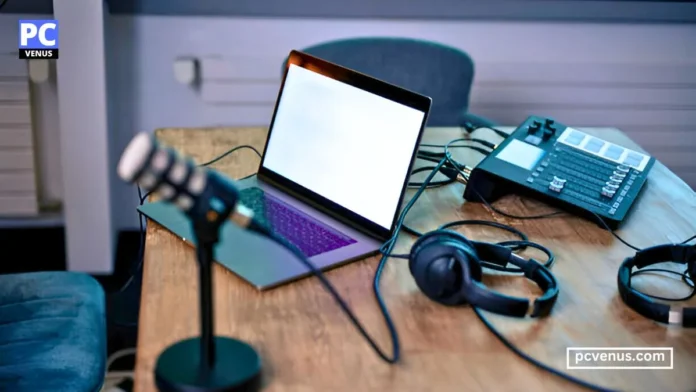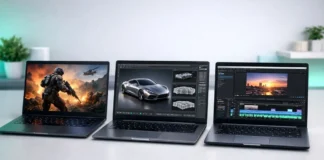If you’re planning to start a podcast or you’re already running one, you’ve probably quickly realized that not every laptop is cut out for the job.
Podcasting isn’t just about hitting the record button and talking into a mic – you need a machine that can handle audio editing software, play multiple tracks without interruption, and stay cool and quiet during long sessions.
There will be plenty of laptops to choose from in 2025, but only a few will really stand out for podcasters.
I’ve looked at new models, tested their performance with editing tools, checked battery life, portability, and overall reliability, and picked the best options that will really make your podcasting workflow easier.
Table of Contents
Which laptop is best for podcasting?
With so many options, choosing the right laptop can be challenging. To make it easier, we’ve tested and reviewed thousands of laptops and picked the top 8 for podcasting.
Our recommendations consider key factors like portability, performance, battery life, and overall reliability—so you can focus on creating great content without worrying about technical issues. These ensure you get the best machine for your work, now and in the future.
| Image | Product | Feature | Price |
|---|---|---|---|
TOP Pick
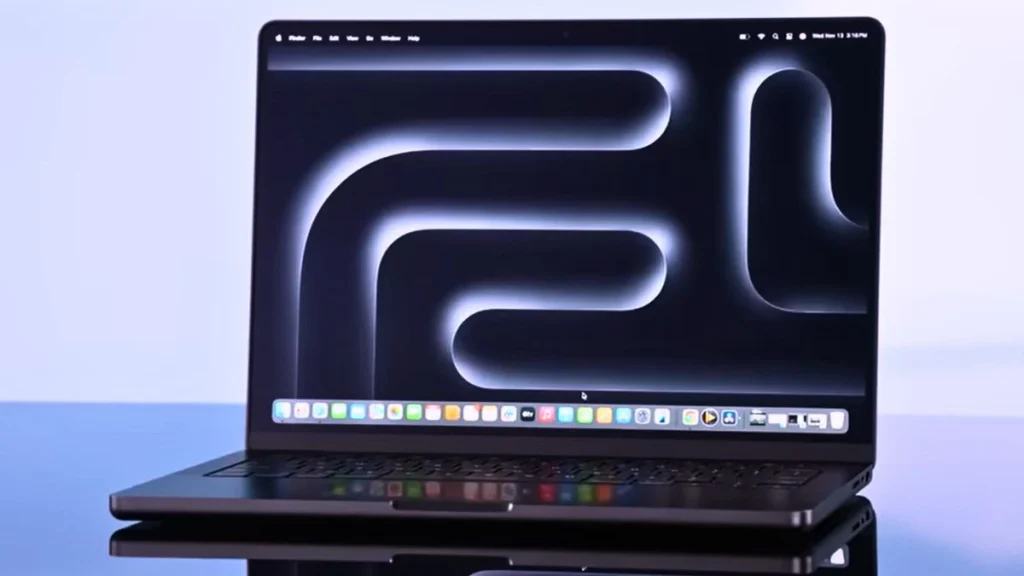 |
Apple MacBook Pro M4 |
| Check Price |
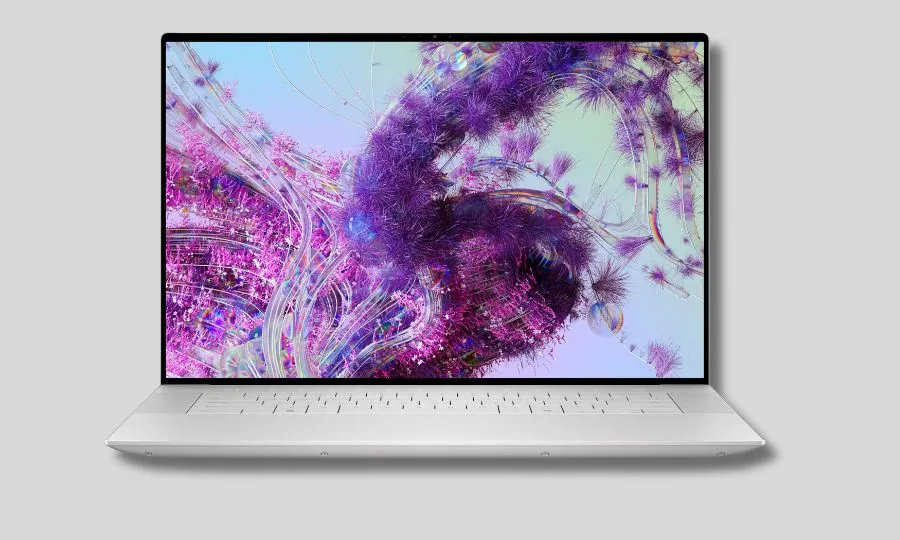 |
Dell XPS 16 |
| Check Price |
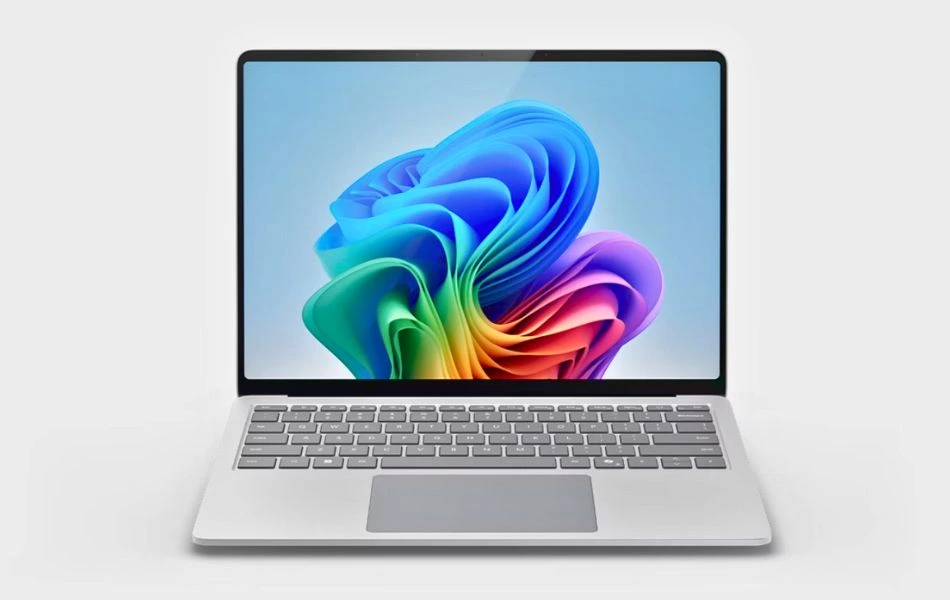 | Microsoft Surface Laptop 7 |
| Check Price |
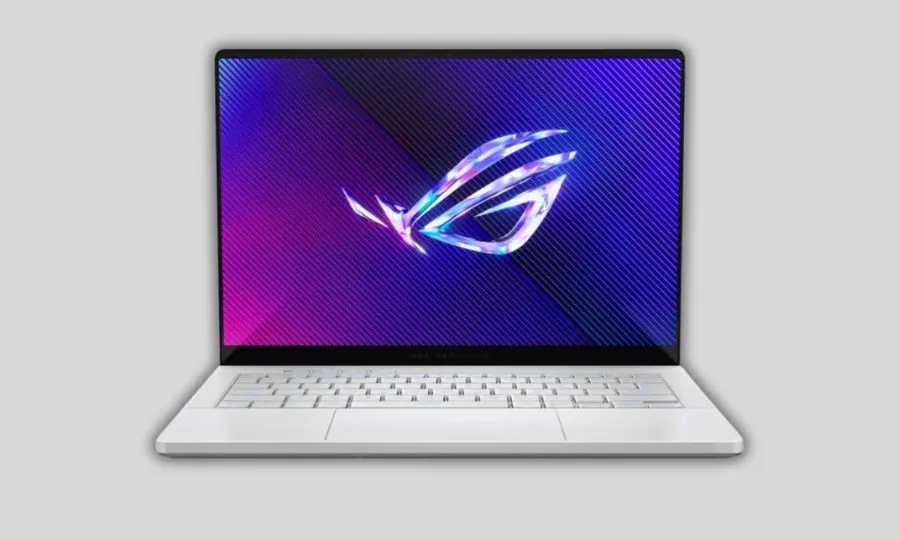 |
ASUS ROG Zephyrus G14 |
| Check Price |
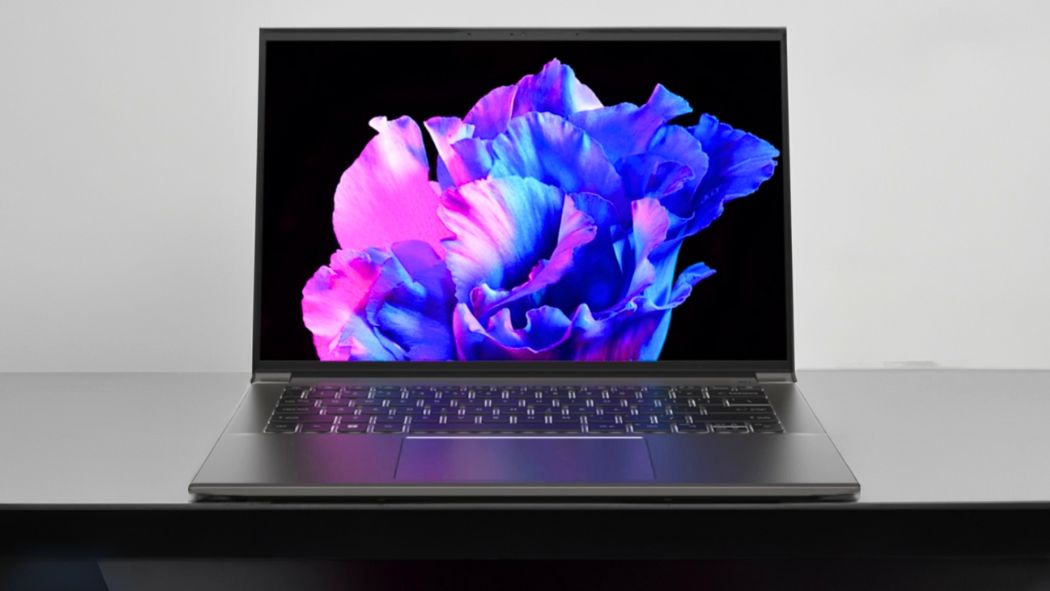 |
Acer Swift X 14 |
| Check Price |
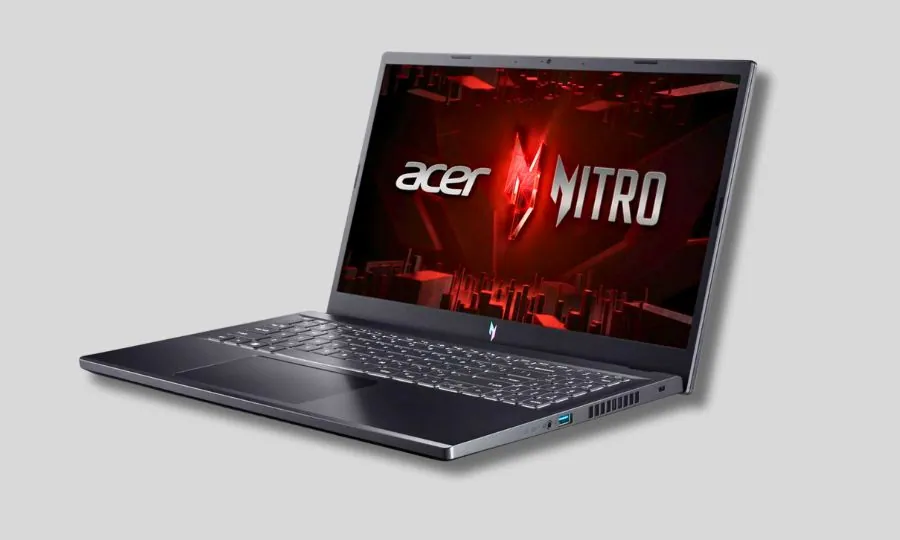 |
Acer Nitro 5 |
| Check Price |
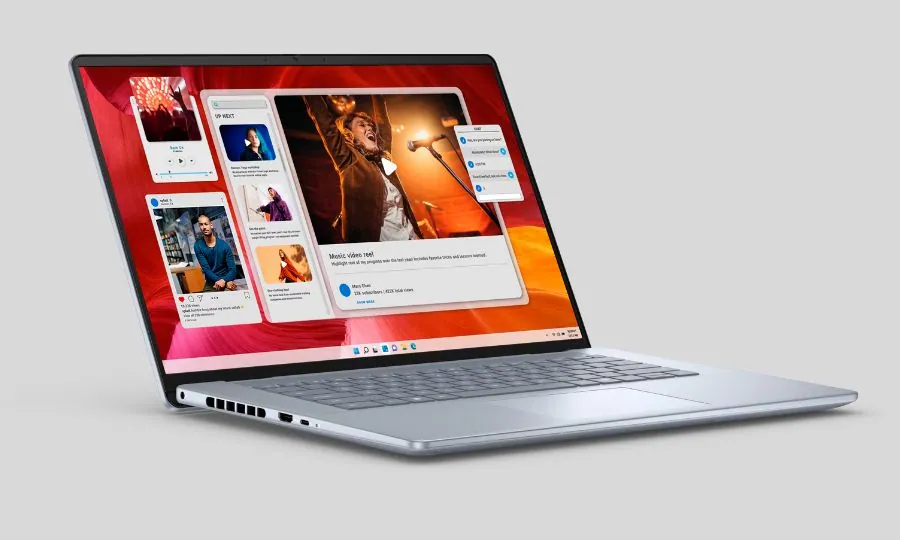 |
Dell Inspiron 16 Plus |
| Check Price |
Why does your laptop matter for podcasting?
Podcasting isn’t just about talking into a mic – it’s a lot of work. You’ll need to run editing software, browse the web for research, and communicate with guests or team members.
If you’re using a slow laptop with poor performance, you’ll constantly have to deal with lags in recording, editing, and rendering. Tasks like multi-track editing and processing will always take time, making the whole podcasting process frustrating.
Meanwhile, someone with a better laptop can work faster, edit easier, and upload their podcast episodes before you—even if they have less talent. That’s why having the right laptop is so important. It saves you time, increases your productivity, and helps you stay ahead of the game.
Editing software and audio plugins also need a powerful processor to work smoothly. Plus, if you like to record in different places or do interviews on the go, a lightweight laptop with long battery life makes things much easier.
Laptop vs. Desktop: Pros and Cons
| Factor | Laptop | Desktop |
|---|---|---|
| Portability | Ideal for field recordings (e.g., MacBook Air’s 2.7 lbs) 2 | Stationary setups only |
| Power | Mid-range CPUs (e.g., Intel i7) handle most DAWs 3 | High-end processors (e.g., Intel i9) for intensive editing |
| Upgradability | Limited (soldered RAM/SSD in MacBooks) 7 | Easily upgrade RAM, GPU, and storage |
| Cost | $500–3,000 (budget to premium) | $1,000+ (excluding peripherals) |
Key Factors to Consider Before Buying a Podcasting Laptop
When choosing a laptop for podcasting, you need to make sure that it can handle recording, editing, and publishing with ease. Whether you are just starting out or already an expert, having a powerful and reliable laptop will make your workflow much easier.
| Component | Minimum Requirement | Ideal Specification |
| Processor (CPU) | Latest Gen Intel Core i5 or AMD Ryzen 5 Capable of handling basic editing and recording tasks. | Latest Gen Intel Core i7, AMD Ryzen 7, or Apple M4 Optimized for multitasking, such as simultaneous live streaming and editing. |
| Memory (RAM) | 8GB Sufficient for basic podcasting tasks. | 16GB or more Ensures smooth operation of Digital Audio Workstations (DAWs) and plugins without lag. |
| Storage | For basic use- 256GB SSD | 512GB SSD or higher will be perfect space for large audio files and quick file access. |
| Audio Quality | Standard built-in microphone and audio ports. | High-quality built-in noise-canceling microphones and low-latency audio ports. Utilize USB-C/Thunderbolt ports to connect external audio interfaces for studio-grade sound. |
| Battery Life | 8 hours Sufficient for standard recording sessions. | 10 hours or more Ideal for remote podcasters requiring extended usage without frequent charging. |
| Portability | Weight under 4 lbs (1.8 kg) offers easy transport for on-the-go recording. | Weight under 3 lbs (1.36 kg) Enhances portability for frequent travelers. |
| Connectivity | Essential ports: USB-A, HDMI, and a headphone jack. | Multiple USB-C/Thunderbolt 4 ports, HDMI 2.1, and a headphone jack. Ensures compatibility with various peripherals and future-proofing needs. |
| Display | 13-14 inch screen with 1080p resolution Suitable for basic editing tasks. | 15-inch or larger screen with 1080p or higher resolution Reduces eye strain and provides a better view of editing interfaces. |
| Keyboard | Standard keyboard layout. | Backlit keys Facilitates work in dimly lit environments. |
| Software Compatibility | Supports basic audio editing software. | Compatible with industry-standard DAWs like Audacity, Adobe Audition, or GarageBand. Ensure the operating system supports your chosen software and plugins. |
| Cooling System | Basic cooling solutions. | Advanced cooling systems with efficient fans or fanless designs Prevents overheating and minimizes noise during recording sessions. |
Premium Picks
| Feature | Apple MacBook Pro (M4) | Dell XPS 16 9640 | Microsoft Surface Laptop 7 |
| Our Ratings for Podcast | 10/10 | 9.8/10 | 9.7/10 |
| Type | Ultrabook | Business | Creative |
| Processor | Apple M4 (10-Core, 10-Core GPU) | Intel Core Ultra 7 155H (16-Core, Up to 4.8GHz) | Snapdragon X Plus |
| Graphics | Apple Integrated Graphics (10-Core) | NVIDIA GeForce RTX 4060 | Integrated Adreno GPU |
| RAM | 16GB Unified Memory | 32GB LPDDR5X (6400 MT/s) | 16GB LPDDR5X |
| Storage | 1TB SSD | 1TB M.2 PCIe NVMe SSD | 256GB SSD |
| Screen | 14.2″ Liquid Retina XDR (3024 x 1964), 1600 nits, ProMotion, True Tone | 16.3″ FHD+ (3840×2400), 120Hz, 400 nits, InfinityEdge, Anti-Glare | 13.8″ HDR Touchscreen, Razor-Thin Bezel |
| Weight | Approx. 3.5 lbs (1.6 kg) | Approx. 4.8 lbs (2.20 kg) | Approx. 2.9 lbs (1.3 kg) |
| Battery Life | All-day battery life | Up to 20 hours | Up to 20 hours |
| Operating System | macOS | Windows 11 Pro | Windows 11 Home (Copilot+ PC) |
| Connectivity | Wi-Fi 6E, Bluetooth 5.3 | Wi-Fi 7, Bluetooth | Wi-Fi 6E, Bluetooth 5.3 |
| Keyboard & Extras | Backlit Magic Keyboard, Touch ID | Backlit Keyboard, Microsoft Office Lifetime License | Recall (coming soon), Cocreator, Live Captions, AI-enhanced webcam |
1. Apple MacBook Pro M4
Best Overall Laptop for Podcasting

Performance
The Apple MacBook Pro M4 is a powerful notebook built around Apple intelligence, delivering a new level of performance for professionals and creators. Equipped with an M4 chip, it has a 10-core CPU and a 10-core GPU, making it ideal for high-performance computing, video editing, and machine learning applications.
Apple integrated graphics deliver stunning visuals, optimized for Final Cut Pro, Logic Pro, and Adobe Creative Cloud for smooth 4K video editing, rendering, and multitasking. 16GB unified memory provides seamless application switching and efficient power management, while the 1TB SSD ensures fast read/write speeds for project files and applications.
Display and design
The 14.2-inch Liquid Retina XDR display is the highlight of the MacBook Pro m4, offering a 3024 x 1964 resolution, 1600 nits peak brightness, and ProMotion (120Hz refresh rate) for smooth scrolling and animations. True Tone and P3 wide color gamut enhance color accuracy, perfect for photographers, designers, and content creators.
Apple’s aluminum unibody gives it a lightweight and portable design with a premium feel, making it a great choice for professionals on the go.
Other Features and Connectivity
MacBook Pro runs on macOS, ensuring top security, seamless Apple ecosystem integration, and long-term updates. Magic Keyboard with Touch ID enhances security and convenience, while Wi-Fi 6E and Bluetooth 5.3 provide faster wireless connectivity. It has three USB-C/Thunderbolt 4 ports for multiple connections, as well as MagSafe 3 charging, a 3.5mm headphone jack, and an SDXC card reader.
Why We Picked Apple MacBook Pro M4 for Podcast?
The Apple MacBook Pro is a top choice among professional podcasters, including Grammy-winning producer Oak Felder, who utilizes its capabilities for music production. Its M4 chip ensures seamless handling of resource-intensive audio editing software like Logic Pro and GarageBand, both optimized for macOS.
The laptop’s good-quality microphones and advanced speakers provide exceptional audio fidelity, reducing the need for external equipment. Its high-resolution Retina display offers precise visuals for detailed waveform editing, and the extended battery life supports prolonged recording sessions without interruption.
Pros
✔ Powerful Apple M4 chip for high-end performance
✔ Liquid Retina XDR display with extreme brightness & ProMotion
✔ Lightweight & premium aluminum design
✔ All-day battery life
✔ Seamless macOS & Apple ecosystem integration
Cons
✘ No USB-A or HDMI ports (USB-C adapters required)
✘ Expensive compared to Windows alternatives

Read our Apple MacBook Pro M4 Review
2. Dell XPS 16 9640
Best Windows Laptop for Professional Podcasting

Performance
The Dell XPS 16 9640 is a powerhouse designed for business professionals, creators, and multitaskers. It is powered by the Intel Core Ultra 7, a 16-core processor that can Turbo Boost up to 4.8GHz, making it ideal for intensive workloads, video editing, and demanding applications.
The big upgrade on this model is the NVIDIA GeForce RTX 4060 dedicated graphics card (8GB GDDR6), which performs far better than integrated graphics. This allows it to handle 1080p gaming, movie editing, and 3D rendering with ease.
With 32GB of LPDDR5X RAM, multitasking becomes seamless, allowing you to switch between multiple apps without interruption. Additionally, the 1TB SSD storage offers fast boot times and ample space for files, projects, and software.
Display and design
One of the key features of the Dell XPS 16 is the 16.3-inch 4K InfinityEdge display.
The four-sided InfinityEdge design offers a borderless experience that maximizes screen real estate while maintaining a compact form factor. EyeSafe technology is also used to reduce harmful blue light, ensuring comfortable usage over long hours.
The XPS 16’s aluminum body and slim design give it a premium feel, making it one of the most portable high-performance laptops in its category.
Other features and connectivity
The laptop comes with Windows 11 Pro, which ensures top-notch security and productivity features. Moreover, it comes with a lifetime license for Microsoft Office, which does not require any additional purchase.
In terms of connectivity, the XPS 16 supports Wi-Fi 7 and Bluetooth 5 to ensure fast and reliable connections. It also includes a backlit keyboard for comfortable typing in low-light environments.
Why did we choose the Dell XPS 16 for podcasting?
The Dell XPS 16 is a favorite among podcasters for its powerful performance and stunning 16.3-inch InfinityEdge display, which provides plenty of space for managing multiple tracks and editing tools.
Equipped with up to an Intel Core Ultra 7 processor and NVIDIA graphics, it can efficiently run demanding digital audio workstations (DAWs) such as Adobe Audition and Audacity. The laptop’s high-fidelity audio output and high-quality construction make it a solid choice for recording and post-production tasks.
Pros
✔ Powerful Intel i7 13th Gen Processor
✔ Dedicated Intel Arc A370M GPU for gaming & creative tasks
✔ Premium Aluminum Build with thin bezels
✔ Bright and Color-Accurate Display (500 nits)
✔ Windows 11 Pro & Microsoft Office Lifetime License
Cons
✘ No traditional USB-A or HDMI ports (USB-C adapters required)
✘ Slightly expensive compared to competitors
3. Microsoft Surface Laptop 7
Best Portable Laptop with AI Tools for Podcasters

Key Specifications
| Processor (CPU) | Snapdragon X Plus |
| AI Engine (NPU) | Qualcomm Hexagon NPU |
| RAM | 16GB LPDDR5X |
| Storage | 256GB SSD |
| Display | 13.8″ HDR Touchscreen, Razor-Thin Bezel |
| Graphics | Integrated Adreno GPU |
| Battery Life | Up to 20 Hours |
| Weight | Approx. 2.9 lbs (1.3 kg) |
| Operating System | Windows 11 Home (Copilot+ PC) |
For podcasters seeking a balance of creativity, portability, and advanced tools, the Microsoft Surface Laptop 7 is a game-changer.
Its blend of exceptional design and AI-powered performance makes it the ultimate all-in-one laptop for recording, editing, and managing podcast content.
Its lightweight, professional appearance and long-lasting battery life make it a solid choice for both beginners and seasoned creators.
Performance
Powered by a Snapdragon X Plus deca-core processor, the Surface Laptop 7 ensures smooth multitasking and is ideal for running audio editing tools like Audacity, Adobe Audition, or Reaper without interruption.
The integrated AI NPU boosts real-time performance with intelligent features like background noise reduction, live voice optimization, and a smooth editing workflow. Equipped with 16GB of RAM and a 256GB SSD, it offers fast boot times and ample storage for podcast recordings and project files.
Display and Design
The 13.8-inch HDR touchscreen with a 3:2 aspect ratio is ideal for multitasking, whether editing audio tracks, browsing research, or managing scripts.
Its slim bezels and high brightness keep visuals crisp and clear, while the lightweight aluminum body ensures portability. For creators on the go, this laptop combines durability and aesthetics, making it equally suitable for home studios and travel.
Battery Life
With up to 20 hours of battery life, podcasters can record multiple shows, edit on the go, or travel without worrying about frequent charging. Fast charging ensures a quick recharge even on a busy schedule.
Other Features
The Surface Laptop 7 features AI-powered features like Windows Studio Effects, which help podcasters enhance conversations with noise reduction, auto-framing, and clear voice quality, making it perfect for remote interviews.
Connectivity includes Wi-Fi 6, Bluetooth 5, and a USB-C port with Thunderbolt support for connecting to an audio interface, external SSD, or multi-microphone setup. Dolby Atmos speakers deliver immersive sound, helping podcasters elevate their programs with confidence.
Why We Chose the Microsoft Surface Laptop 7 for Podcasting
This laptop stands out because of its AI-first approach. With the Copilot+ AI tool, podcasters can transcribe their shows, create summaries, draft show notes, and even automate parts of their workflow.
This intelligent support saves time, allowing creators to focus on storytelling and production quality. With its premium design, long-lasting battery life, and powerful processor, the Surface Laptop is one of the best laptops for podcasting in 2025.
Pros
✔ Copilot+ AI features: Recall, Cocreator, subtitle translation
✔ Lightweight and premium design
✔ Up to 20 hours of battery life
✔ Brilliant HDR touchscreen
✔ Quiet, fanless operation
Cons
✘ Only 256GB storage — not ideal for media-heavy users
✘ No discrete GPU for heavy visual workloads
✘ Some AI features (like Recall) require future updates
Mid-Range Picks
| Feature | ASUS ROG Zephyrus G14 | Acer Swift X 14 |
| Our Ratings for Podcast | 9.6/10 | 9.4/10 |
| Type | Gaming | Ultrabook |
| Processor | AMD Ryzen 9 8945HS (8 Cores, 4.0 GHz Max) | Intel Core Ultra 7 155H (16 Cores, Up to 4.8 GHz) |
| Graphics | NVIDIA RTX 4060 (8GB GDDR6) | Intel Arc Integrated Graphics |
| RAM | 16GB LPDDR5X (Upgradeable) | 16GB LPDDR5X |
| Storage | 1TB NVMe SSD | 1TB NVMe PCIe Gen 4 SSD |
| Display | 14-inch OLED, 3K (2880 x 1800), 120Hz Refresh Rate | 14-inch OLED, 2.8K (2880 x 1800), 90Hz Refresh Rate |
| Weight | 3.31 lbs (1.5 kg) | 2.76 lbs (1.25 kg) |
| Battery Life | 73Whr Lithium-Ion | Up to 12 hours |
| Operating System | Windows 11 Home | Windows 11 Home |
| Connectivity | Wi-Fi 6, USB Type-C, HDMI | Wi-Fi 6E, Bluetooth 5.3 |
4. ASUS ROG Zephyrus G14
Best Portable Gaming Laptop for Podcasting and Editing

Asus has always been committed to launching the best laptops, especially in the gaming sector. The ROG Zephyrus series is known for its stylish design, premium components, and excellent gaming performance.
The latest Asus ROG Zephyrus G14 continues this tradition, offering powerful hardware in a lightweight, stylish chassis. It caters to the needs of gamers, content creators, and professionals who want portability without compromising on performance.
Design and Build
Unlike traditional gaming laptops, the ASUS ROG Zephyrus G14 has a refined and minimalist design. The white theme with black dots on the lid gives it a unique look. Its compact 14-inch body makes it one of the most portable gaming laptops. It has a backlit keyboard, giving it a premium feel without the need for RGB lighting.
Performance
At the heart of the Zephyrus G14 is the AMD Ryzen 9 8945HS processor with 8 cores and a top speed of 4 GHz. The processor has excellent multitasking capabilities, making it ideal for gaming, engineering applications, and content creation.
A dedicated NVIDIA RTX 4060 (8GB GDDR6) GPU ensures smooth performance for games and demanding applications. It comes with 16GB LPDDR5X RAM and 1TB NVMe SSD, which offer fast boot times, seamless multitasking, and ample storage.
Screen
The 14-inch OLED display with 3K resolution (2880 x 1800) makes this laptop stand out. It offers 100% sRGB and high Adobe RGB color accuracy, ensuring that colors are vibrant and true to life. The OLED screen delivers deep blacks, clear details, and high contrast, making everything look good. Also, the high refresh rate keeps the action smooth, whether you’re playing games, editing movies, or working on a creative project.
Battery Life
The Zephyrus G14 features a 73Whr lithium-ion battery, which offers impressive battery life for a gaming laptop. This ensures long hours of usage for both productivity tasks and casual gaming.
Why did we choose the Asus ROG Zephyrus G14 for our podcast?
The ASUS ROG Zephyrus G14 is primarily known as a gaming laptop, but it also excels at podcasting thanks to its powerful hardware and portability. AMD Ryzen processors and NVIDIA graphics cards enable efficient audio processing and editing. Its compact size and long battery life make it perfect for podcasters who need mobility without compromising on performance.
Pros
✔ Powerful AMD Ryzen 9 processor
✔ Compact and stylish design
✔ OLED 3K display with vibrant colors
✔ Good battery life for a gaming laptop
Cons
✘ Limited GPU performance compared to high-end Zephyrus models
✘ No RGB lighting on the keyboard
5. Acer Swift X 14
Best Mid-Range Laptop for Podcast Creators

Performance
The Acer Swift X 14 is equipped with the latest Intel Core 7 Ultra 155H processor with up to 16 cores and boost clock speeds up to 4.8GHz, ensuring outstanding performance for multitasking, productivity, and content creation.
Intel Arc integrated graphics is optimized for everyday tasks, media editing, and casual gaming, delivering increased productivity and enhanced AI capabilities.
With 16GB of LPDDR5X RAM, apps run smoothly, while a 1TB PCIe Gen 4 SSD ensures lightning-fast storage speeds for fast boot times and app loading.
Display and design
The 14-inch OLED display with 2.8K resolution (2880 x 1800) and 90Hz refresh rate delivers deep blacks, vivid colors, and smooth visuals, perfect for media consumption and creative work.
Designed for portability, the Acer Swift X 14 weighs just 1.25 kg (2.76 lbs) and features a premium lightweight aluminum body, making it one of the best Ultrabooks for professionals on the go.
Other Features and Connectivity
Swift X 14 runs on Windows 11 Home, providing a modern and productive user experience. It features Wi-Fi 6E and Bluetooth 5.3 to ensure super-fast and reliable wireless connectivity.
A USB-C port with Thunderbolt 4 provides high-speed data transfer, charging, and external display support, while an HDMI 2.1 port enables seamless connection to monitors and TVs. Additionally, a 3.5mm headphone/microphone combo jack ensures convenience for audio needs.
Why did we choose the Acer Swift X 14 for podcasting?
The Acer Swift X 14 strikes a balance between performance and price. With a powerful processor and dedicated graphics, it can handle audio editing tasks efficiently. Its lightweight design and decent battery life make it suitable for podcasters who need a reliable machine on a budget.
Pros
✔ Powerful Intel Core Ultra 7 processor for high performance
✔ Stunning 2.8K OLED display with deep blacks and vibrant colors
✔ Ultra-lightweight aluminum design, perfect for travel
✔ Long battery life for all-day productivity
✔ Fast storage and memory for smooth multitasking
Cons
✘ No dedicated GPU for high-end gaming or heavy rendering
✘ No SD card slot for content creators
Budget/Affordable Picks
| Feature | Acer Nitro 5 | Dell Inspiron 16 Plus |
| Our Ratings for Podcast | 8.7/10 | 9.0/10 |
| Type | Gaming | Business/Creative |
| Processor | Intel Core i5-13420H (8 Cores, Up to 4.6 GHz) | Intel Core i7-13620H |
| Graphics | NVIDIA GeForce RTX 4050 Laptop GPU | Intel UHD Graphics (UMA) |
| RAM | 8GB DDR5 | 16GB LPDDR5 |
| Storage | 512GB NVMe PCIe Gen 4 SSD | 1TB SSD |
| Display | 15.6-inch Full HD (1920 x 1080), IPS, 144Hz | 16.0” QHD (2.5K), 120Hz, Anti-Glare |
| Weight | 4.66 lbs (2.11 kg) | Approx. 4.5 lbs |
| Battery Life | Up to 6 Hours | Up to 7 hours |
| Operating System | Windows 11 Home | Windows 11 Home |
| Connectivity | Wi-Fi 6, Thunderbolt 4, Backlit Keyboard | USB-C, USB-A, HDMI, Headphone Jack, Dell Comfort View Plus |
6. Acer Nitro 5
Best Budget Laptop for Podcasting Beginners

See latest price on
Performance
The Acer Nitro 5 Gaming Laptop is equipped with an Intel Core i5-13420H processor with up to 8 cores and a turbo frequency of up to 4.6GHz, designed to provide powerful gaming and multitasking performance.
This ensures smooth gaming, faster processing, and efficient handling of demanding applications. This laptop is equipped with the NVIDIA GeForce RTX 4050 laptop GPU, which delivers real-time ray tracing, DLSS support, and AI enhancements for immersive gameplay, smooth rendering, and higher FPS in modern games.
With 8GB of DDR5 RAM, gaming and multitasking become seamless, while the 512GB Gen 4 SSD ensures ultra-fast load times and fast system responsiveness.
Display and design
The 15.6” Full HD IPS display with a 144Hz refresh rate delivers crisp visuals, vibrant colors, and incredibly smooth gameplay with reduced motion blur for a competitive edge in fast-paced games.
Built for gamers, the Nitro 5 features a sleek black chassis, a well-ventilated cooling system, and an ergonomic backlit keyboard for enhanced aesthetics and usability. It weighs 4.66 pounds (2.11 kg), which is a bit heavy, but it’s well balanced for performance-focused users.
Other Features and Connectivity
Nitro V runs on Windows 11 Home, ensuring a modern and intuitive user experience. Connectivity is excellent, with Wi-Fi 6 providing fast, stable internet, and Thunderbolt 4 supporting high-speed data transfer, external display connection, and charging.
The laptop also has multiple USB 3.2 ports, an HDMI 2.1 port for 4K output, an Ethernet (RJ-45) port, and a 3.5mm headphone/microphone combo jack. An advanced cooling system with dual fans and an optimized exhaust system ensures consistent thermal performance, preventing overheating during extended gaming sessions.
Why did we choose the Acer Nitro 5 for podcasting?
The Acer Nitro 5 is an affordable option that doesn’t compromise on performance. Equipped with a powerful processor and enough RAM, it can competently manage audio editing applications. While it’s primarily designed for gaming, its hardware specs make it a viable option for podcasters just starting out or those with moderate editing needs.
Pros
✔ Powerful processor for smooth gaming and productivity
✔ NVIDIA GeForce RTX Graphics with ray tracing and DLSS support
✔ Higher Refresh Rate Full HD display for an immersive gaming experience
✔ Wi-Fi 6 & Thunderbolt 4 for fast connectivity and versatility
✔ Advanced cooling system with dual fans
Cons
✘ RAM may require an upgrade for heavy gaming and multitasking
✘ Slightly bulky at 4.66 lbs, making it less portable
Read our Acer Nitro 5 Review
7. Dell Inspiron 16 Plus
Best Budget-Friendly Big-Screen Laptop for Podcasting

Performance
Designed for productivity and entertainment, the Dell Inspiron 16 Plus 7640 features a powerful Intel Core i7-13620H processor and 16GB of LPDDR5 RAM for seamless multitasking. Its 16:10 2.5K QHD display with a 120Hz refresh rate ensures a crisp and smooth viewing experience, making it ideal for content creation, office work, and light gaming.
The 1TB SSD provides ample storage space and fast loading times, making it an ideal choice for professionals, students, and general users. The anti-glare display with ComfortView Plus reduces eye strain and makes long workdays more comfortable.
Build and design
The ice blue aluminum chassis looks premium, and its military-grade durability ensures long life. Despite its large 16-inch screen, this laptop is still portable and lightweight.
Connections and Battery
The Inspiron 16 Plus 7640 offers excellent connectivity options with USB-C, USB-A, HDMI, and a headphone jack. 7 hours of battery life (normal use) ensures good unplugged performance.
Why did we choose the Dell Inspiron 16 Plus for podcasting?
The Dell Inspiron 16 Plus has a large display and powerful performance, making it suitable for podcasters who like to use a large screen for editing. Its high-resolution display provides ample working space, and powerful internal functions ensure smooth operation of audio editing software. The laptop’s build quality and array of ports increase its usefulness for podcasting professionals.
Pros
✔ High-resolution display with 120Hz refresh rate
✔ Powerful Intel Core processor for multitasking
✔ Enough SSD for fast storage
✔ ComfortView Plus reduces blue light strain
Cons
✘ No dedicated GPU in the base model
✘ Battery life may be lower under heavy workloads
Learn More: Dell Inspiron 16 Price, Full Specs, and Review
How to Pick the Right Laptop for Podcasting
Check the Processing Power
First of all, processing power is the most important factor of any device. A latest and strong processor ensures smooth multitasking, fast audio rendering, and efficient editing. Ideally, you should choose Intel Core i5/i7 or AMD Ryzen 5/7 processors. If you are a Mac user, the Apple M4 chip is optimized for audio processing.
The GPU is another component of laptops, computers that enhances performance. Your video editing or audio editing will take much less time to render if you have a dedicated and latest model GPU.
If you plan to work with video podcasts, having a dedicated GPU (like RTX 30601 4060, 4070) can help with video editing.
RAM and Storage – Speed and Performance
RAM and storage play a huge role in performance. A laptop with at least 16GB of RAM will help you run multiple applications simultaneously without interruptions in your podcast. Storage is equally important – having an SSD (solid state drive) is a must for faster file access and better system performance.
Audio Quality – Crisp and Clear Sound
Audio quality is another important factor. Your podcast will be as good as the sound quality you can make it. While some laptops like Microsoft, Apple, Dell come with high-quality studio microphones and noise reduction, most professionals prefer to use an external audio interface like Focusrite Scarlett for better sound control. Make sure your laptop has USB-C or Thunderbolt ports to support these devices.
Battery Life – For On-The-Go Creators
If you travel or record in different places, battery life is something you can’t ignore. A laptop with at least 8 hours of battery backup is ideal, so that you don’t have to constantly look for a power outlet. Some models offer 8-20 hours of battery life, making them perfect for long podcasting sessions.
Portability – Lightweight and Travel-Friendly
Portability is another aspect to consider. If you often work on the go, a lightweight laptop is a better choice. Look for a laptop that weighs less than 3 pounds for easy carrying. This is a great choice if you need a durable and travel-friendly option, as it has a military-grade build to withstand wear and tear.
Connectivity – Essential Ports and Wi-Fi
Good connectivity options are a must, as podcasting often requires external microphones, cameras, and storage devices. Your laptop should have USB-C, HDMI, and SD card slots to connect all your devices. Additionally, Wi-Fi 6/6E ensures faster and more stable uploads and downloads, especially when live streaming or sending large audio files.
Display and keyboard – Comfort for long editing sessions
If you spend long hours editing, having a good display and keyboard can make a lot of difference. A high-resolution screen of 14 to 17 inches like FHD, QHD, UHD provides better visibility, and a backlit keyboard is helpful when working in low-light conditions.
Also Read:
- What is FHD? Everything You Need To Know
- What is QHD? Everything you need to know
- What is UHD? Everything you need to know
Software compatibility – Works with popular podcasting tools
Software compatibility is another important point. Your laptop should support popular podcasting software like Audacity, Adobe Audition, and GarageBand so that you can edit your recordings easily.
Cooling system – No overheating while recording
Finally, a good cooling system is important. Overheating can cause your laptop to slow down and even crash during a recording session. Some gaming laptops like the ASUS ROG have excellent cooling systems that can handle long hours of editing and recording without a drop in performance.
FAQs
1. Can I use a Chromebook for podcasting?
Chromebooks are lightweight and affordable, but they run Chrome OS, which limits your software options. Most professional digital audio workstations (DAWs) like Audacity or Adobe Audition aren’t natively supported. You’ll have to rely on web-based tools like Anchor or Sound trap, which work in the browser but don’t have advanced editing features.
When it might work:
1. You’re recording a single episode with minimal editing.
2. You’re on a budget and already have a Chromebook.
When to avoid it:
1. You’re editing multi-track interviews or using plugins (e.g., noise reduction, compression).
2. You’re planning to livestream or record a video podcast.
2. Is Mac or Windows better for podcasting?
At the beginner level, podcasters typically use Windows laptops, although anyone who has the budget for a Mac would never consider anything other than a Mac.
Both Mac and Windows systems have their strengths when it comes to podcasting, and the best option often depends on your personal preferences and the specific software you use.
Macs are renowned for their strong performance, high security and come pre-installed with GarageBand, a user-friendly DAW that’s great for beginners.
Windows laptops, on the other hand, offer a wider range of PC hardware options and are compatible with various DAWs like Audacity, Reaper and Adobe Audition.
You need to consider factors like the operating system, budget and your familiarity with any hardware or software you already have.
Macs:
Pros:
1. Seamless with GarageBand (free) and Logic Pro (paid)—both are podcasting staples.
2. M-series chips offer excellent battery life and silent operation (no fan noise!).
3. Fewer driver issues with audio interfaces.
Cons:
1. Little Expensive (a MacBook Air starts at $999).
2. Limited port variety (you’ll need dongles for mics/interfaces).
Windows:
Pros:
1. More budget-friendly options.
2. Wider software support (Audacity, Adobe Audition, Reaper).
3. Easier to upgrade RAM/storage yourself.
Cons:
1. Bloatware on cheaper models can slow down performance.
2. Occasional audio driver headaches.
3. How much RAM is needed for podcast editing?
Having enough RAM ensures top performance. How much RAM you need largely depends on the complexity of your podcast production and your dreams. For basic editing tasks, 8GB of RAM is generally sufficient.
However, if you’re working with multiple tracks, high-resolution audio files, or resource-intensive plugins, upgrading to 16GB or more can provide a smoother experience and reduce the likelihood of system slowdowns.
Our recommendations will be-
8GB RAM:
– Good for: Editing single-track recordings in Audacity, light browsing.
– Struggles with: Multi-track edits, live streaming, or having 10 Chrome tabs open while editing.
16GB RAM:
– The gold standard for podcasters. Handles 10+ audio tracks, plugins, and Zoom calls in the background without breaking a sweat.
32GB RAM:
– Only needed if you’re editing video podcasts, producing music, or running virtual instruments.
4. How much storage do I need?
Podcast files, especially uncompressed audio formats like WAV, can take up a lot of storage space. A 1-hour WAV file can take up ~700MB, and projects with multiple tracks or videos can take up 10GB+ per episode. So our advice would be-
If you have a 256GB SSD, you’ll have to rely on external drives or cloud storage (which slows down the workflow).
A 512GB SSD will be convenient for 50+ episodes. This allows you to store raw files, edited projects, and software.
A 1TB+ SSD is ideal for video podcasters or hoarders who never delete anything.
Always backup to an external drive or the cloud (Dropbox, Google Drive). SSDs are faster and more reliable than old-fashioned hard drives!
5. Do I need a dedicated sound card?
No—but you do need an audio interface (which is like a great external sound card). However, if you’re aiming for professional-level audio quality, investing in an external audio interface can be beneficial.
Most laptops have good built-in sound cards, but they’re not made for pro audio:
Built-in sound card:
– OK for Zoom calls or basic recording with a USB mic.
– Prone to noise/interference (e.g., laptop fan noise).
Audio interface:
– A must if you use an XLR mic (e.g., Shure SM7B).
– Reduces background noise and improves recording quality.
6. What is the best budget laptop for podcasting in 2025?
Budget-conscious podcasters can start with laptops like the Acer Nitro 5 or Dell Inspiron 16 Plus. Both are affordable yet powerful enough to handle audio editing software without freezing. If you’re just getting started, these laptops give you solid performance at a lower price.
7. Can I use a gaming laptop for podcasting?
Yes, gaming laptops like the ASUS ROG Zephyrus G14 or Acer Nitro 5 work well for podcasting because they have powerful processors and strong cooling systems. The only downside is they are heavier and often have shorter battery life compared to ultrabooks.
8. Do I need a MacBook for podcasting, or will Windows laptops work too?
You don’t need a MacBook to run a successful podcast. Windows laptops like the Dell XPS 16 and Acer Swift X 14 handle audio editing software smoothly. However, MacBooks come with built-in GarageBand, and Logic Pro is only available on macOS, which makes them popular among podcasters.
9. What minimum laptop specs are required for podcast editing?
At least an Intel Core i5 or Ryzen 5 processor, 8GB RAM, and 256GB SSD are enough for basic podcasting. But for smooth multi-track editing and plugins, go for 16GB RAM, a fast SSD (512GB+), and a laptop with USB-C/Thunderbolt ports for audio interfaces.
10. Which laptop is best for podcasters who travel a lot?
The Microsoft Surface Laptop 7 and MacBook Pro M4 are the best choices for travel. They’re lightweight, have long battery life, and run quietly, which is perfect for recording or editing on the go.
